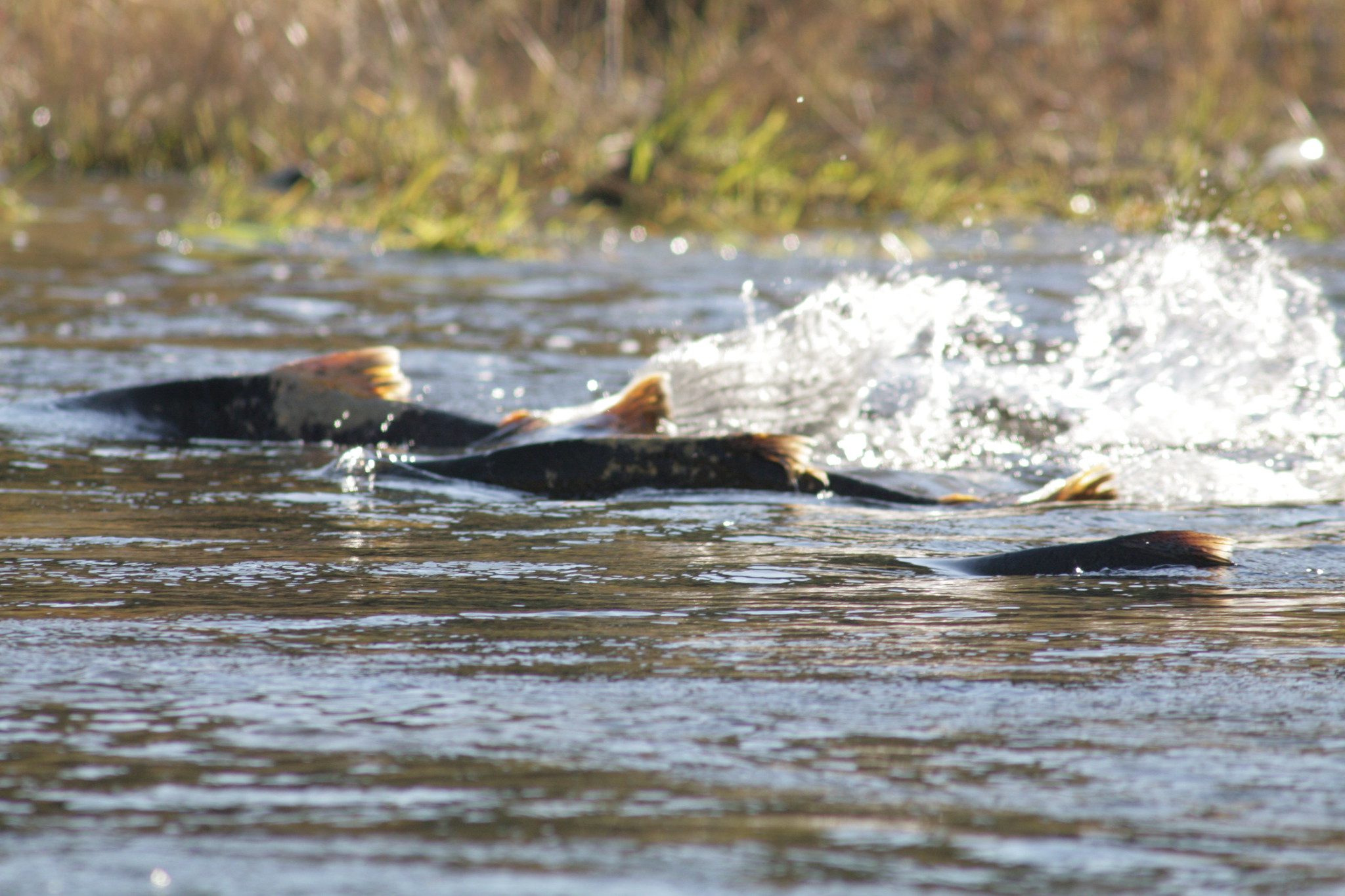During and after construction: paddlers can enjoy the transformed site as they traverse this scenic urban river, and fish can swim freely. Photos: Tuolumne River Trust. Illustration: NOAA Fisheries.
We’re celebrating the 5-year anniversary of the Habitat Restoration and Enhancement (HRE) Act by spotlighting all of the amazing habitat- and species-boosting work restorationists do around California. This month, we talked to Patrick Koepele, Executive Director of Tuolumne River Trust, about how removing a dam that threatened people and species brought a critical urban waterway back to life.
What: Dennett Dam Removal
Who: Tuolumne River Trust (TRT)
Where: Lower Tuolumne River
Fish Barriers
Dennett Dam was built in 1935 to create a swimming hole for local community members. However, the structure gave out twice soon after and created a significant physical hazard for people – not to mention an impenetrable barrier for fish. Additionally, the stagnant water became a perfect breeding ground for water hyacinth, a destructive and invasive aquatic plant that regularly causes havoc in most of the Sacramento Delta. The dam needed to go, and TRT got to work over a decade to raise funding for, permit, and ultimately restore the river.

A massive mat of invasive water hyacinth clogs the hazardous remains of Dennett Dam. Photo: Tuolumne River Trust
Human Hazards
Sounds easy, right? Not really. Dam removal isn’t as simple as pulling metal and concrete out of an active river and letting the water go to work, especially when you have a 12-week construction window and the structure’s been in place for decades. The riverbed needs to be graded and reconstructed not just for habitat, but for sediment management from years of upstream stagnation. This all means the riverbed needs to be accessible for large construction equipment, and while that’s happening the water needs to flow somewhere.
“This project benefits multiple fish species and our community, and the HRE Act helped us get to work. Removing the dam means natural ecological processes can occur, habitat is boosted, and people can boat safely on a truly amazing section of an urban river.” – Patrick Koepele, Executive Director, Tuolumne River Trust
Invasive Plants
The solution? The team diverted the Tuolumne River into an existing overflow channel so construction crews could get to work. When the riverbed was complete, the team also planted native seed mixes along the riverbanks to boost riparian habitat, and when the work was done the community came out to celebrate the transformation. TRT also monitored the site’s underwater and topographical development for the next two years, as a living habitat requires careful attention to make sure alterations benefit species over time.

Central Valley Chinook on Lower Tuolumne River. Photo courtesy of USFWS and Dan Cox
The Tuolumne River flows for just under 150 miles from the Sierras to the San Joaquin River in the Central Valley, and its Chinook and Central Valley Steelhead populations rely on safe traversal out to the ocean and back to continue their life cycles. Thanks to TRT, over 52 miles of the Tuolumne are accessible again for our finned friends.
Human hazard? Check. Fish barrier? Check. Invasive plants? Check. TRT’s hard work and dedication is an all-around win for communities, fish and plant habitat.
